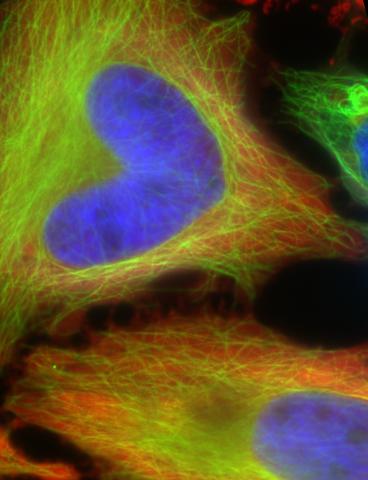Table of ContentsClose
HeLa cells are one of the most broadly used human cell lines in biomedical research. Originated from a cancer patient in the 1950s, these immortal cells have been used as models to study cancer biology and promising therapies, and they have enabled medical breakthroughs including the polio vaccine and in vitro fertilization. This image—showing the cell nucleus (blue), microfilaments (green), and protein kinase A (red)—is provided by Yujia “Jennie” Liu, a graduate research assistant in the laboratory of Stefan Strack, PhD, professor of pharmacology and pathology. The Strack lab has used HeLa cells for discoveries ranging from unraveling the mystery of a genetic mutation called PPP2R5D in intellectual disability, to screening of potential drugs for treatment of diabetic peripheral neuropathy.

